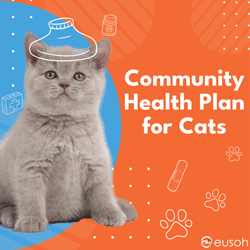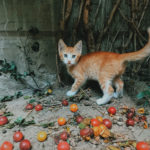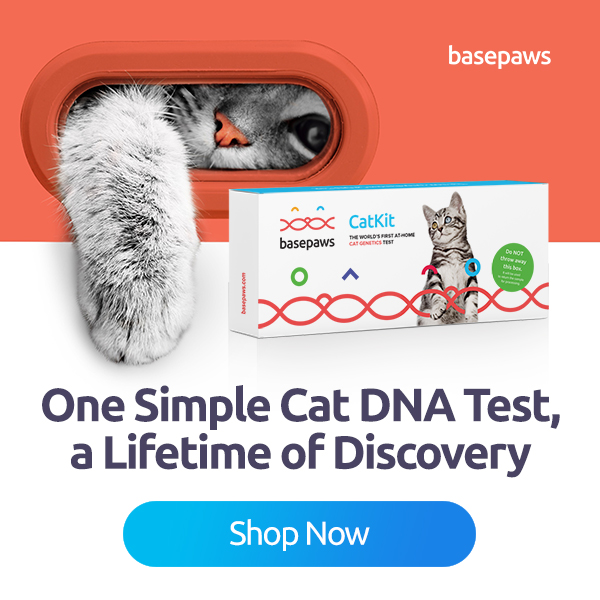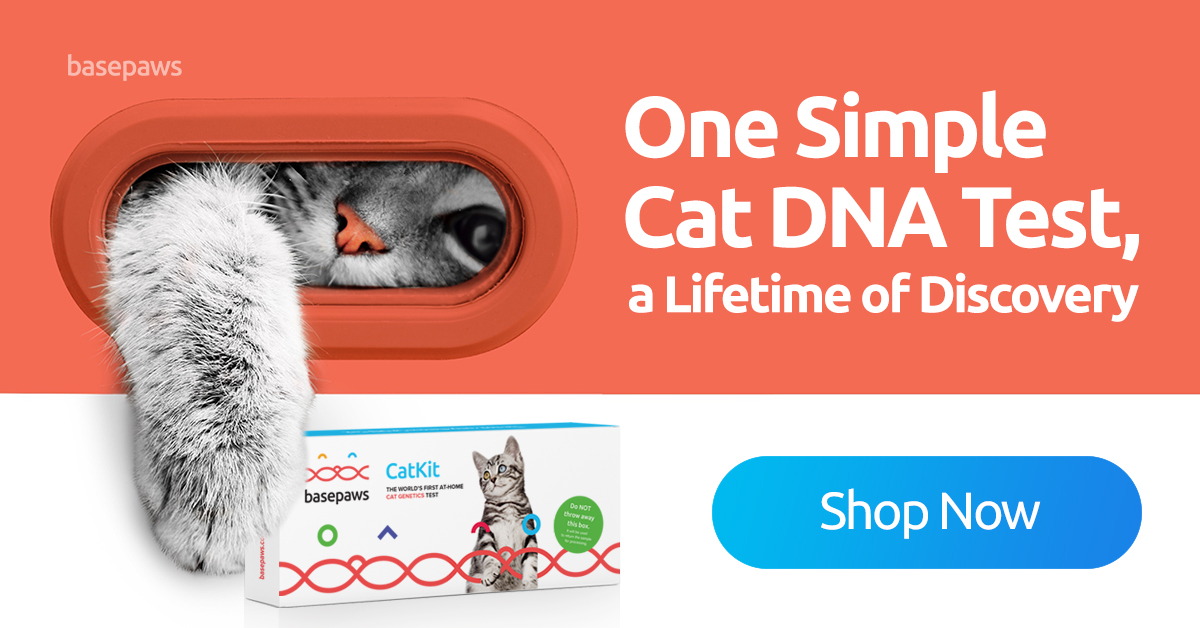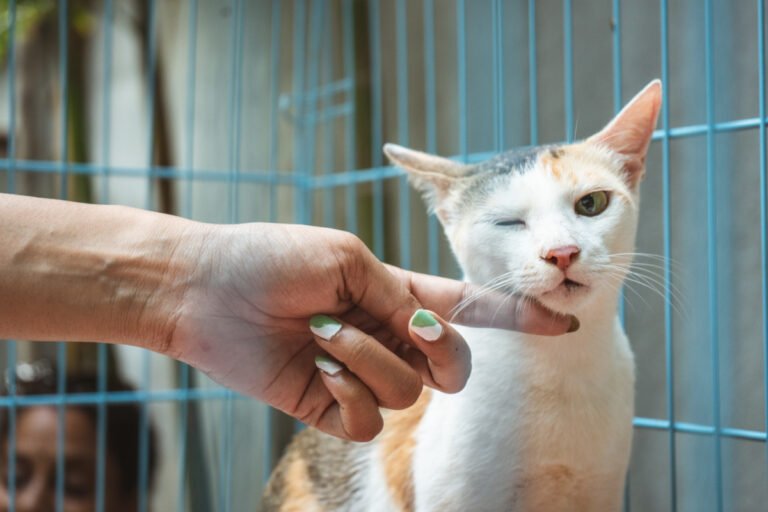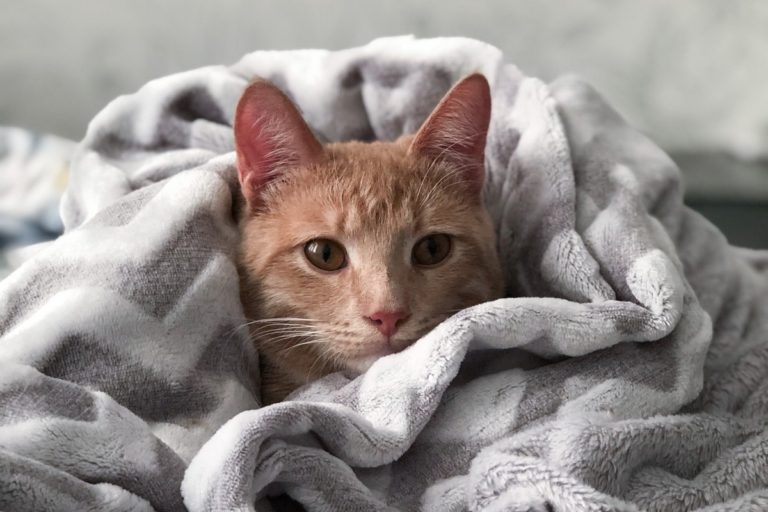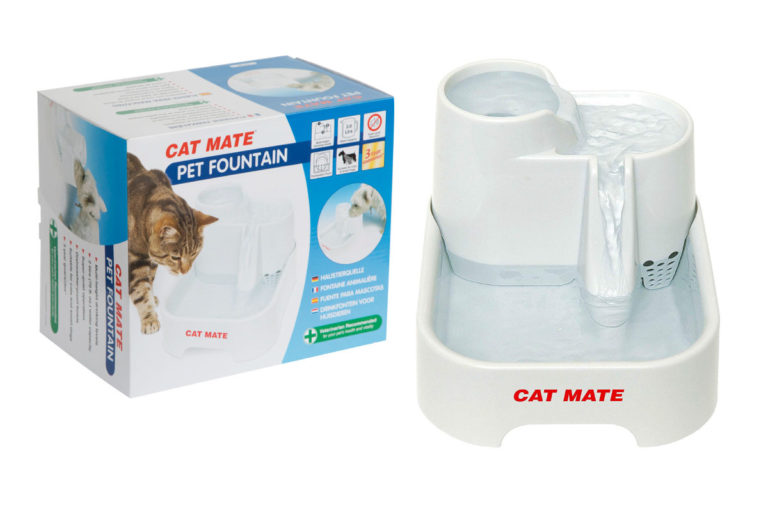We all want our kitties to be happy and fulfilled. Unfortunately, this leads many cat owners to unwittingly overfeed their cat. Use our Cat Food Calculator and answer that elusive question: “Exactly how many calories does my cat need to keep fit?”
DISCLAIMER: This post may contain affiliate links. If you click one of these links and decide to make a purchase, we may receive a small commission. This comes at no extra cost to you and helps to keep the site alive and up to date. If you want more information, please review our Privacy Policy. Thank you for your support!
How Many Calories Does My Cat Need?
You might be tempted to always put out the same amount of food and let your cats determine how much, or how little, they eat. However, this is not the best approach, as many cats tend to overfeed this way. Overfeeding, as well as underfeeding, can have disastrous effects on your cat’s health and in the long run will only work to shorten her life.
A cat’s precise energy needs and metabolic rate determine how many calories does a cat need and they depend on a number of factors that can change over time. It is therefore recommended that you reevaluate your feline’s food proportions every so often and make adjustments to keep her diet balanced and healthy. Use our Cat Food Calculator once a year around your cat’s birthday to see if you are still feeding them the right amount.
Lifestage
The most important factor in determining how many calories a cat needs is the stage of life that they’re in. Kittens need a lot of energy to grow, so they eat a lot more calories per pound of body weight than a fully grown cat. Our Cat Food Calculator also works as a kitten calorie calculator. Just put in your kitten’s exact age and the calculator will automatically calculate the correct amount of calories for growing kittens.
As cats reach adulthood around 2 years old, their metabolism slows down and they can get by on a much lighter diet. Again, you can use our Cat Food Calculator to figure out precisely how many calories cats need at this age and your cat’s specific weight.
Finally, as cats reach seniority around the age of 11, their metabolic rate picks up again. Senior and geriatric cats are often reported to lose weight fast if their caloric intake isn’t increased. If your cat is getting older, recalculate how many calories your cat needs a day with out Cat Food Calculator.
Related Post: Is Pet Insurance Worth It For Indoor Cats?
Is pet insurance worth it for indoor cats? Read this guide to learn about pet insurance for cats and calculate if it is really worth it for your indoor cat.Activity Level
Just as with humans, the amount of exercise your cat gets also plays a role. Cats in general are known for their love of sleep, napping for what seems like the entire day. And the older they get, the more they sleep. Elderly cats can sleep for up to 20 hours a day.
What matters more than sleep is how they spend their waking hours. Is your cat of the adventurous type, actively playing, climbing onto things and trolling the neighborhood on a daily basis? Or does she prefer hanging around inside, staying low to the ground, or safely curled up in your lap?
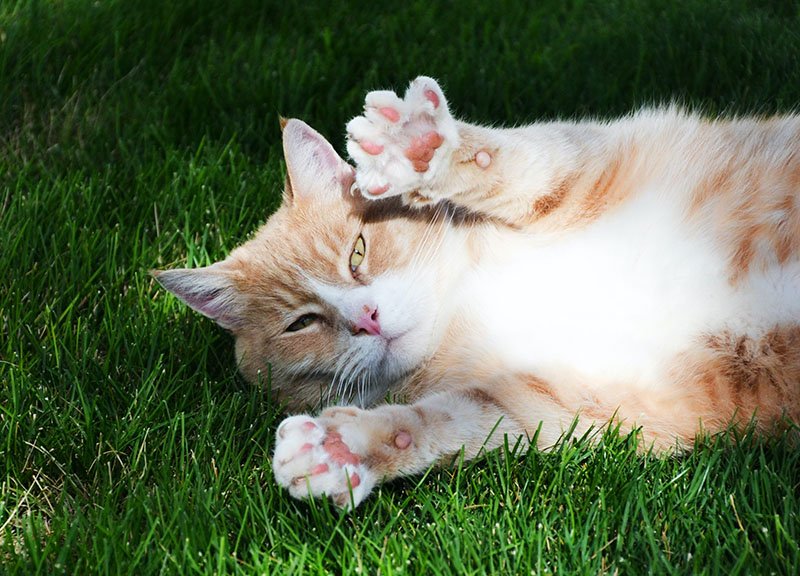
Spayed Or Neutered
Hormones can also have an effect on metabolism, which is why your cat’s needs may change after being spayed or neutered. In general, spaying or neutering slightly lowers the metabolic rate, decreasing the amount of energy your cat uses. Your vet will therefore recommend you to decrease how many calories you feed your cat after you have her “fixed”.
Weight Maintenance
If your cat is currently too heavy – or too light – monitoring her caloric intake is the first and best approach you can take. By temporarily restricting how many calories you feed your cat, you allow her a chance to burn off any excess fat. Combined with some playful exercise to build up muscle mass, she will return to her lean tiger-self in no time.
Similarly, a tiny, underweight kitty requires more calories in order to bulk up. Keep an eye on her weight to make sure your efforts are paying off. And definitely consider taking her to the vet for a checkup. Unexplained weight loss is often a symptom of an underlying disease. If left untreated, your dietary changes likely won’t make much of a difference.
Related Post: Is Peanut Butter Good For Cats?
Peanut butter is great to give medicine to dogs and hide its taste. But is peanut butter good for cats? Or should they stay away from it? Read on to find out.Cat Food Calculator
So, how many calories does a cat need a day? You can calculate the exact answer for each of your cats with our Cat Food Calculator below.
Enter your cat’s weight in pounds or kilograms. If your cat needs to gain or lose weight, enter their target weight into the next field. The Cat Food Calculator will automatically determine an increased or reduced calorie amount, while still keeping it within healthy ranges.
Next, enter your cat’s current age, their activity level and whether or not they have been spayed or neutered. This is all the information our Cat Food Calculator needs to correctly calculate exactly how many calories a cat needs.
Recommended Caloric Composition
Cats are obligate carnivores. This means that their digestive system is specifically designed to process other animals. Muscle meat, organs and even some small bones are the main ingredients of a wild cat’s diet. Even though your kitty doesn’t live out in the wild, she has the same digestive system and, as such, the same dietary needs.
According to this source, a wild mouse has the following nutritional profile: 70% moisture, 19% protein, 6.3% fat and 1.7% carbohydrates. Considering this mouse as the ideal cat snack, your cat should get her calories in the following proportions.
Protein
Protein is by far the most important building block in your cat’s diet. In absolute terms, most of the dry matter content should always be protein. The crude protein content should be at least 25% on a dry matter basis, though a minimum of 40% is preferable. If we take out the moisture, our mouse consists of approximately 63.3% protein. In terms of calories, this comes down to 52.8% of the total caloric intake.
Fat
Fat contains more calories per gram than proteins or carbs, so less is needed to reach the required caloric amount. The crude fat content of your cat’s food should be between 20% and 24%. Our mouse contains 21% fat, again on a dry matter basis. This translates to 42.5% of the total caloric intake, slightly less than the proteins.
Carbohydrates
Carbohydrates do not have a natural place in a cat’s diet. A wild cat’s carb intake is generally limited to whatever is left in the stomach of its prey. Our mouse just had a big meal and on a dry matter basis it contains 5.7% carbs. This amounts to no more than 4.7% of your cat’s caloric intake.
Since cats can’t properly digest large amounts of sugar, a diet with too many carbs severely increases their chances of becoming obese or diabetic. It can also cause gastrointestinal problems and may trigger food allergies. Choose a food with a crude carb content of no more than 15%. Go lower if you can.
Related Post: Can Cats Survive On A Vegan Diet?
Can cats survive on a vegan diet? In short: no. Read this article to learn about the risks associated with vegan diets for cats and why cats can’t be vegan.
Finding The Best Food For Your Cat
Now you know exactly how many calories your cat needs and what you should look for in a quality cat food, it’s time to find the best food for your cat!
Commercial Cat Food
A word of caution is needed here, unfortunately. When shopping for commercial cat foods you will soon realize that most of them do not adhere to the norms of a healthy feline diet. Especially dry foods. To keep production costs low, cat food manufacturers often include cheap filler ingredients like grains in their products, raising your cat’s carb intake to dangerous levels.
All you can do is try to find the best food that’s available to you, so do that. Wet foods generally have a better nutritional profile than dry foods. If you absolutely want to give your cat dry food during the day, go for a grain-free option with either peas or potatoes. Balance it out with a good quality wet food and provide plenty of fresh water.
Use our Cat Food Database to get started. It includes all available products from the most popular cat food brands, evaluated by their nutritional content. See how they stack up to each other and make an informed decision about the best food for your cat.
Homemade Cat Food
A likely more healthy alternative to commercial cat foods is making your own cat food at home. There are plenty of recipes available for healthy homemade kibbles and wet foods that you can try. It may take a bit more time and effort on your part than a quick run to the store, but you can be sure your cat gets what she needs.
The trickiest part of feeding your cat home cooked meals is getting the vitamin and mineral content just right. Raw meat alone is not enough to sustain her, so you will need to add supplements of calcium, potassium and other nutrients. The exact amount you add matters. Adding too much will put an unnecessary strain on your cat’s kidneys, while adding too little can mess with her digestive system or circulation.
All in all, you need quite a bit of expertise to become a proper cook for cats. If you decide to go this route, take some time to properly educate yourself on feline nutrition, cooking techniques and storage methods before you start.
Also prepare yourself to do a lot of cleaning. Raw meat can contain bacteria that are harmful to you and your family. Keep your workstation clean and never mix the tools you use for your cat’s food with those you use for your own meals to limit the chances of cross-contamination.
Conclusion
Healthy nutrition is an important part of any life, including your cat’s. A well-balanced diet can make the difference between a diseased cat that dies too young and a cat that grows old without ailments. Unfortunately, we are, or choose to be, limited in our options of cat food by what’s available to us in our local or online stores. And even though homemade cat foods might seem like a perfect solution, they come with their own risks.
Luckily, more and more pet food companies are seeing the light when it comes to good versus cheap ingredients. Freeze-dried cat foods made from real meat are becoming more readily available, and so are pure raw meat options.
If your budget allows for it, I would definitely recommend you give these healthier, pet-centered products a try. Not only will you be supporting your cat’s health, you will also help to grow the healthy pet food market, lower product prices and slowly push the unhealthy grain-ridden products to the side. All cats will be helped by that.



